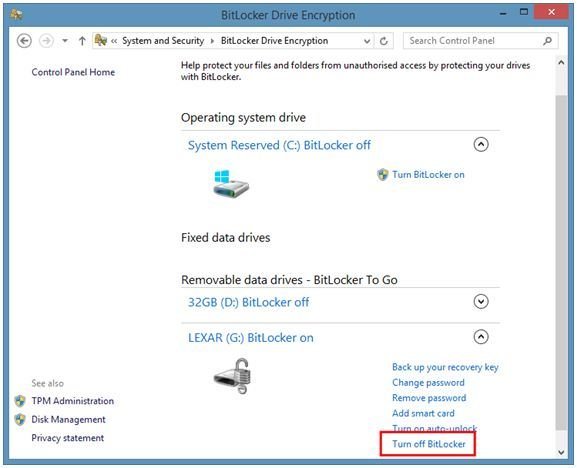

- BITLOCKER ON THE GO HARDWARE ENCRYPTION HOW TO
- BITLOCKER ON THE GO HARDWARE ENCRYPTION PASSWORD
- BITLOCKER ON THE GO HARDWARE ENCRYPTION PC

You could also secure it in other ways - for example, you could provide a PIN at startup. For example, you can configure automatic unlocking at startup - your computer will grab the encryption keys from the TPM and automatically decrypt the drive. If your computer does have a TPM, you’ll have additional options.
BITLOCKER ON THE GO HARDWARE ENCRYPTION PASSWORD
If your computer doesn’t have a TPM, you can unlock the drive with a password or by inserting a special USB flash drive that functions as a key. You can select several different ways of unlocking the drive.
BITLOCKER ON THE GO HARDWARE ENCRYPTION HOW TO
Next, you’ll see the “Choose how to unlock your drive at startup” screen. Double-click the “Require additional authentication at startup” setting, select Enabled, and check the “Allow BitLocker without a compatible TPM” option. Navigate to Computer Configuration \ Administrative Templates \ Windows Components \ BitLocker Drive Encryption \ Operating System Drives. Press Windows Key + R to open the Run dialog, type gpedit.msc into it, and press Enter. You’ll just need to open the Local Group Policy Editor application and change this setting. If you’re doing this on your own computer, you’re the computer’s administrator. An attacker can’t just rip out your computer’s hard disk or create an image of an encrypted disk and decrypt it on another computer. The TPM will only provide the encryption keys after verifying the state of the computer. BitLocker can store the encryption keys here, which is more secure than simply storing them on the computer’s data drive. This is a microchip built into the computer, installed on the motherboard.
BITLOCKER ON THE GO HARDWARE ENCRYPTION PC
If the PC you’re enabling BitLocker on doesn’t have a Trusted Platform Module (TPM), you’ll see a message saying your administrator must set the “Allow BitLocker without a compatible TPM” option.īitLocker Drive Encryption normally requires requires a computer with a TPM to secure an operating system drive. If someone doesn’t have the unlock method, they can’t access the files on the drive. You’ll be prompted for your unlock method - for example, a password - when you connect the drive to your computer. BitLocker To Go: External drives, such as USB flash drives and external hard drives, can be encrypted with BitLocker To Go.You can also encrypt other drives in a computer, not just the operating system drive. The encryption is otherwise transparent - your files will appear like they normally would on an unencrypted system, but they’re stored on the disk in an encrypted form. BitLocker will then decrypt the drive and load Windows. When the computer boots, the Windows boot loader loads from the System Reserved partition, and the boot loader will prompt you for your unlock method - for example, a password. BitLocker Drive Encryption: Sometimes referred to just as BitLocker, this is a “full-disk encryption” feature that will encrypt an entire drive.There are two types of BitLocker encryption you can enable here: If you don’t see this option, you don’t have the right edition of Windows.Ĭlick the Turn on BitLocker option next to an operating system drive, internal drive (“fixed data drive”), or removable drive to enable BitLocker for the drive. You can also open Windows Explorer or File Explorer, right-click a drive, and select Turn On BitLocker. To enable BitLocker, open the Control Panel and navigate to System and Security > BitLocker Drive Encryption.


 0 kommentar(er)
0 kommentar(er)
